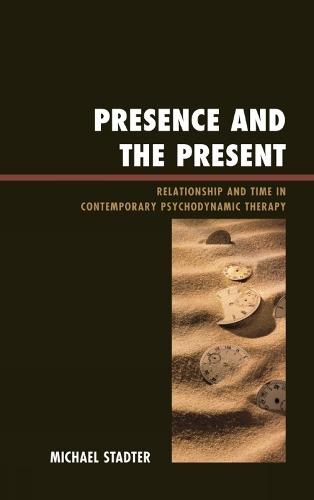Full Product Details
Author: Michael Stadter
Publisher: Jason Aronson Publishers
Imprint: Jason Aronson Publishers
Dimensions:
Width: 16.30cm
, Height: 2.40cm
, Length: 23.90cm
Weight: 0.576kg
ISBN: 9780765706553
ISBN 10: 0765706555
Pages: 288
Publication Date: 20 December 2011
Recommended Age: From 22 from 22
Audience:
Professional and scholarly
,
Professional & Vocational
Format: Hardback
Publisher's Status: Active
Availability: In Print

This item will be ordered in for you from one of our suppliers. Upon receipt, we will promptly dispatch it out to you. For in store availability, please contact us.
Reviews
Presence and the Present: Relationship and Time in Contemporary Psychodynamic Therapy makes a truly unique contribution to the field of psychodynamic therapy. In a creative way, it combines a masterful integration of contemporary views of psychotherapy with an illuminating illustration of how a skilled clinician makes use of such an integrated approach. Dr. Stadter also breaks new ground by exploring the phenomenon of time and its relationship to psychotherapy in a most original way. Reading Presence and the Present is a valuable educational experience; one that will enhance the work of anyone engaged in the field of psychotherapy.-- -- Theodore Jacobs This is a book in a rather typical and refreshing American vein. If there is, as I think, an American school of psychoanalysis it is composed of singular authors who write from the pragmatics of experience and then find some way to connect it to one theory or another. Stadter like Giovacchini, Boyer, and others is a clinician first and the theory follows on. This grassroots writing has an honesty that is deeply sincere, intelligent, and will speak to many people who work, day to day, with their patients and in this author will find a kindred soul.-- -- Christopher Bollas Dr. Stadter's book is another critical puzzle piece in learning about the bridge between the mind and the brain. Dr. Stadter, as an expert in relational psychodynamic theory, was able to provide us with the pertinent research from the area of neuroscience supporting the psychodynamic theory. The contribution of this work to the field is significant, as we need to continue to be on the forefront of the effort to understand the workings of the human mind.-- -- Harry Gill
Presence and the Present: Relationship and Time in Contemporary Psychodynamic Therapy makes a truly unique contribution to the field of psychodynamic therapy. In a creative way, it combines a masterful integration of contemporary views of psychotherapy with an illuminating illustration of how a skilled clinician makes use of such an integrated approach. Dr. Stadter also breaks new ground by exploring the phenomenon of time and its relationship to psychotherapy in a most original way. Reading Presence and the Present is a valuable educational experience; one that will enhance the work of anyone engaged in the field of psychotherapy. -- Theodore Jacobs, MD, Albert Einstein College of Medicine Dr. Stadter's book is another critical puzzle piece in learning about the bridge between the mind and the brain. Dr. Stadter, as an expert in relational psychodynamic theory, was able to provide us with the pertinent research from the area of neuroscience supporting the psychodynamic theory. The contribution of this work to the field is significant, as we need to continue to be on the forefront of the effort to understand the workings of the human mind. -- Harry Gill, MD, Washington School of Psychiatry This is a book in a rather typical and refreshing American vein. If there is, as I think, an American school of psychoanalysis it is composed of singular authors who write from the pragmatics of experience and then find some way to connect it to one theory or another. Stadter like Giovacchini, Boyer, and others is a clinician first and the theory follows on. This grassroots writing has an honesty that is deeply sincere, intelligent, and will speak to many people who work, day to day, with their patients and in this author will find a kindred soul. -- Christopher Bollas, PhD, British Psychoanalytical Society
This is a book in a rather typical and refreshing American vein. If there is, as I think, an American school of psychoanalysis it is composed of singular authors who write from the pragmatics of experience and then find some way to connect it to one theory or another. Stadter like Giovacchini, Boyer, and others is a clinician first and the theory follows on. This grassroots writing has an honesty that is deeply sincere, intelligent, and will speak to many people who work, day to day, with their patients and in this author will find a kindred soul. --Bollas, Christopher
Author Information
Michael Stadter, PhD, maintains a private practice in Bethesda, MD. He is author of Object Relations Brief Therapy: The Therapeutic Relationship in Short-Term Work.




